End of year donation letter template
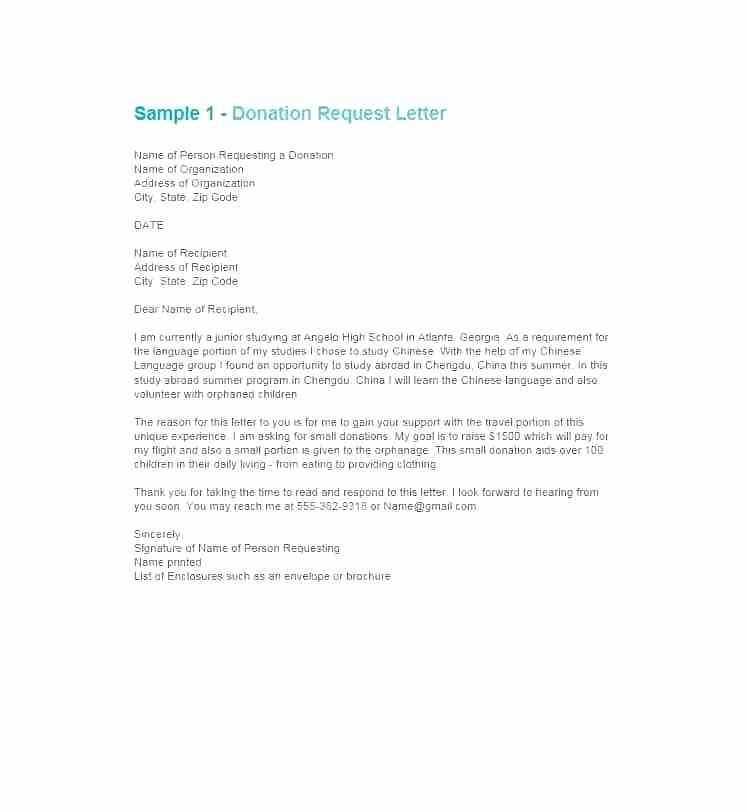
Make your end-of-year donation request stand out with a clear and compelling message. Focus on the impact your organization has had over the year and how contributions can continue that momentum. Provide specific examples of how donations have helped your cause, ensuring potential donors can easily see the difference their support can make.
Keep your letter concise, direct, and respectful of the recipient’s time. Start by acknowledging their past involvement, if applicable, and express your genuine appreciation for their support. Outline how donations in the final months of the year can help achieve immediate goals and set the stage for success in the coming year.
Conclude with a clear call to action. Provide easy ways for donors to contribute, whether through an online link, check, or other accessible methods. Ensure they feel confident that their contribution will be used effectively, and end by reinforcing the importance of their continued support.
End of Year Donation Letter Template
Show appreciation for your donors’ support throughout the year. Let them know how their contributions have made a difference and offer an easy way to make another gift as the year ends. Personalize your message to highlight specific achievements and goals for the upcoming year. A well-crafted donation letter should feel personal, expressing gratitude and providing a clear call to action.
| Subject: Year-End Giving Opportunity |
Dear [Donor’s Name],
As the year comes to a close, we want to thank you for your generous support of [Organization Name]. With your help, we have been able to [mention specific accomplishments or programs funded by donations]. You’ve made a lasting impact, and for that, we are incredibly grateful.
With the year-end approaching, we invite you to make one final contribution. Your gift will help us [mention specific goals for the upcoming year or a special initiative]. You can easily make a donation online or send a check by [date] to ensure it’s counted for this year’s tax deductions.
Your continued support plays a key role in our mission, and we hope you’ll join us as we move into another year of [describe your mission or work]. Together, we can achieve even more in the coming months!
If you have any questions or would like to discuss giving options, please don’t hesitate to reach out to us at [contact information].
Warm regards,
[Your Name]
[Your Title]
[Organization Name]
Crafting a Compelling Opening Statement
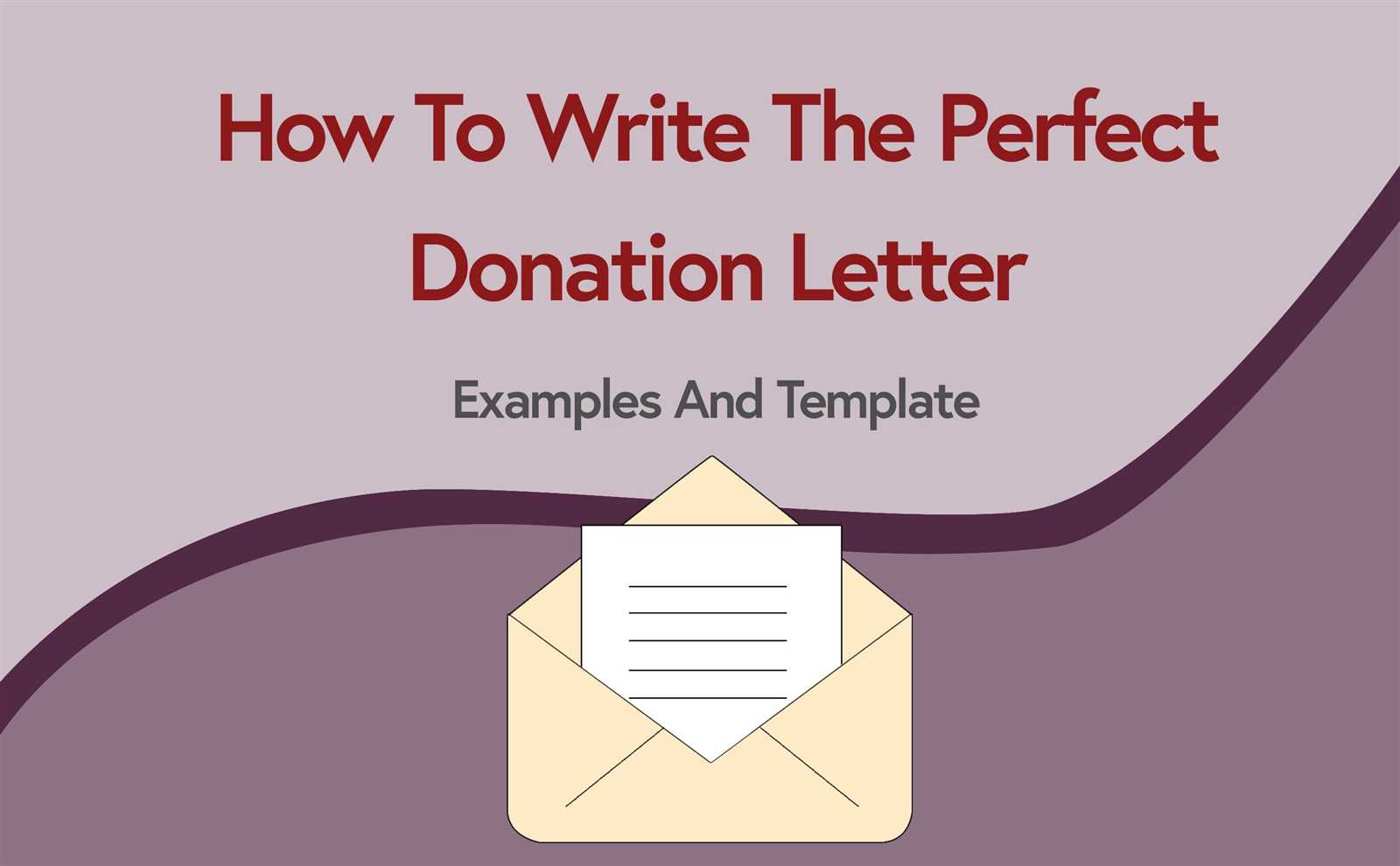
Begin with a direct, engaging statement that immediately connects with the reader. Focus on the mission of your organization and the impact of their contribution. Make the opening personal and relevant to your audience’s values and experiences.
- Start with a story or scenario that appeals to emotions. For example, share a brief success story or a key moment that demonstrates the difference donations have made.
- Include specific data or figures to highlight the tangible outcomes of past support. Numbers such as “Your gift of $50 helped provide 500 meals this year” give a concrete sense of impact.
- Ask a question that resonates with the reader’s sense of responsibility or desire to help. For instance, “How would you like to make a lasting change in our community this holiday season?”
- Avoid vague statements or generic requests. Be specific about what you are asking for and why it matters right now.
Keep the tone warm and appreciative, showing gratitude while focusing on the reader’s ability to contribute to something meaningful. Appeal to both logic and emotion, ensuring the recipient feels motivated to take action immediately.
Choosing the Right Tone for Your Audience
Adjust the tone of your letter based on the relationship you have with your donors. If your audience is familiar and engaged with your organization, a more personal and heartfelt tone will resonate. Use friendly language that acknowledges their ongoing support and emphasizes the impact of their past contributions.
For new donors, maintain a warm and welcoming tone, showing appreciation for their first contribution while providing a clear connection between their gift and the difference it will make. Highlighting their role in supporting your mission can strengthen their sense of involvement and encourage future giving.
In cases where you’re addressing corporate sponsors or large donors, opt for a more professional tone that recognizes their significant commitment while still expressing gratitude. Be direct and focused, but always sincere. Acknowledge their leadership in supporting your cause and the broader impact of their contributions.
Adapt the tone to reflect both the nature of your audience and the message you’re conveying. Whether it’s a casual update or a formal request for a larger donation, the tone should align with the expectations of your readers and motivate them to take action.
Highlighting Impactful Stories and Examples
Share specific examples of how your organization has made a difference. Use real stories to illustrate the change donors’ support brings. For instance, describe a family who was able to access vital services thanks to your program or an individual whose life was improved by the funding. Specifics like names, dates, and outcomes make the impact clearer and more relatable.
Consider adding a quote from a beneficiary or volunteer. A personal touch goes a long way in showing the emotional connection that donations create. For example, a simple statement like “Thanks to your donation, I can now afford the treatment I need” offers a tangible connection to the cause.
Highlight progress toward specific goals, such as how a fundraising target helped fund a community center or provide scholarships to deserving students. Numbers speak volumes. “With $10,000 raised, we were able to provide 50 meals a day for the homeless for a month” shows measurable results and gives the reader a clear picture of how their contribution would make an impact.
Clear Call to Action: How to Encourage Donations
A strong call to action (CTA) is the backbone of any donation request. Be specific about the amount you’re asking for and the impact it will have. For example, instead of saying “Donate today,” try “Donate $50 to provide 100 meals to those in need.” This helps donors connect their contribution to a tangible result.
Make it Easy to Give
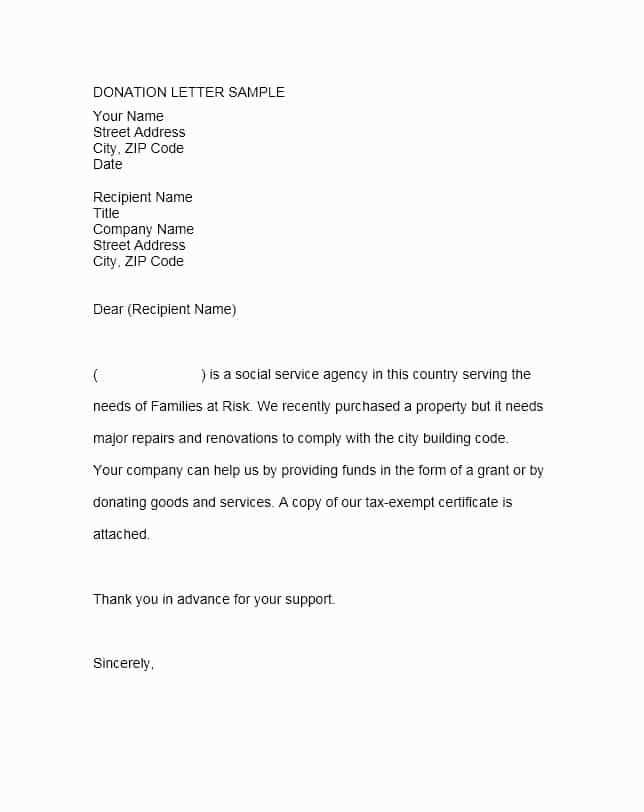
Ensure the donation process is simple and quick. The fewer steps it takes, the better. Include direct links to donation pages and payment options that are widely used. Offering multiple ways to donate–credit card, PayPal, or mobile–will accommodate different preferences.
Use Urgency and Gratitude
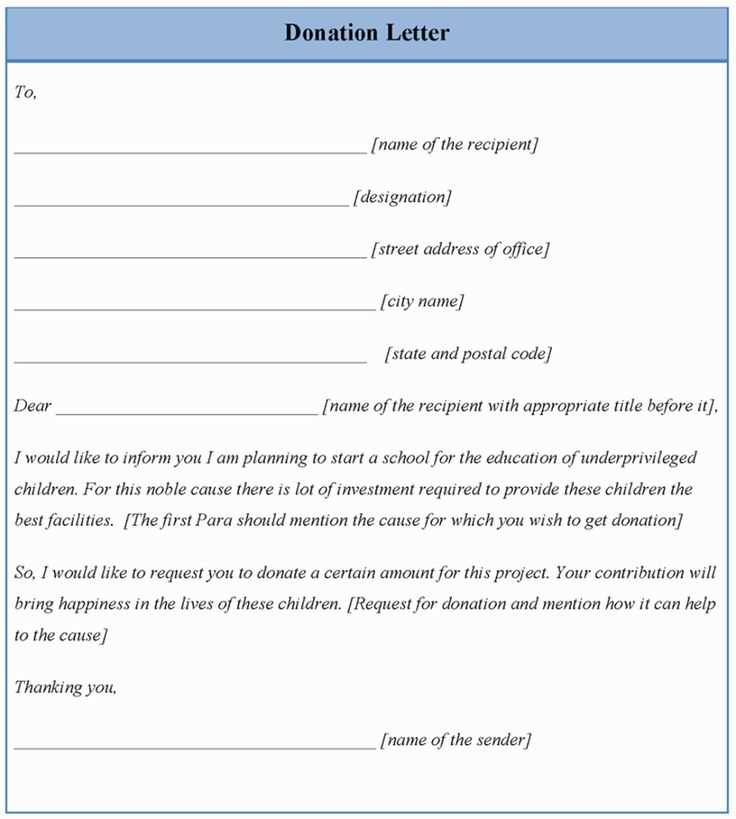
Incorporate urgency without sounding pushy. Statements like “Double your impact today!” or “Matching gifts available until midnight!” encourage action. Follow up with a sincere thank you, highlighting how the donor’s gift has made a real difference. Gratitude builds trust and encourages future donations.
Personalizing the Message for Maximum Connection
Tailor your donation letter by addressing the recipient by name and referencing their past contributions. This creates an immediate connection and shows that you recognize their ongoing support. Customizing the message based on their specific involvement, such as the amount donated or the campaigns they’ve supported, makes them feel valued and appreciated.
- Use specific details: Mention the exact impact of their previous donation. For example, “Your generous gift of $100 helped provide 200 meals for those in need.” This demonstrates transparency and accountability.
- Refer to their relationship with your organization: If they’ve attended events or volunteered, acknowledge these actions. For example, “We were thrilled to see you at our annual charity gala last year. Your support makes all the difference.”
- Include a personalized call to action: Encourage further engagement with language like, “Your support has already done so much, and we would love for you to continue making a difference in the coming year.” This builds a sense of community.
- Make it conversational: Keep the tone friendly and warm. People respond better to messages that feel less like a formal request and more like a friendly conversation.
By weaving these personal touches into your end-of-year donation letter, you’ll create a stronger emotional connection that increases the likelihood of continued support. When people feel recognized and valued, they’re more likely to contribute again.
Thank You Note: Expressing Gratitude and Building Trust
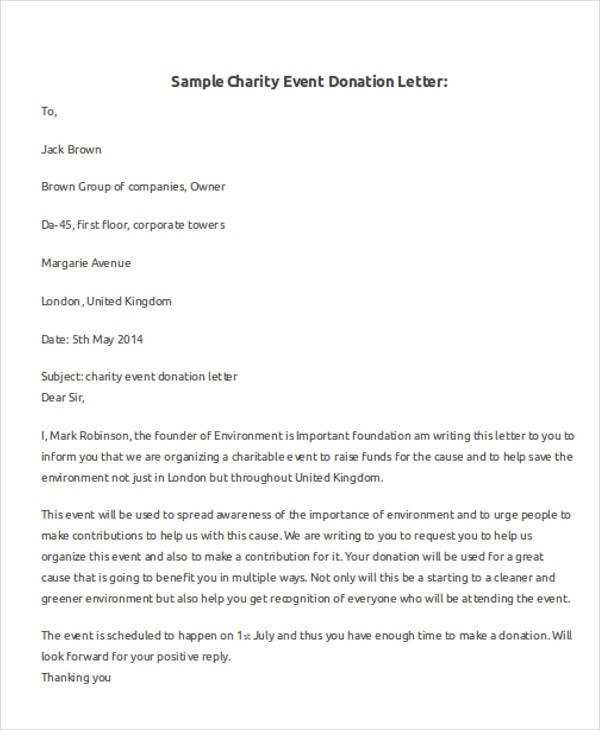
Be specific in your thank you note. Acknowledge exactly what the donor’s support has accomplished. Whether it’s funding a program, helping to reach a goal, or making a difference in someone’s life, pointing out the impact creates a personal connection and highlights the value of their contribution.
Show appreciation for the donor’s commitment. People value knowing that their donations matter, and a sincere expression of how their generosity is contributing to meaningful outcomes strengthens the bond between the organization and its supporters.
Personalize the Message
Tailor the note to the individual donor. Use their name and reference previous interactions or support. This makes the note feel less generic and more thoughtful, reinforcing the trust between the donor and your organization.
Invite Future Engagement
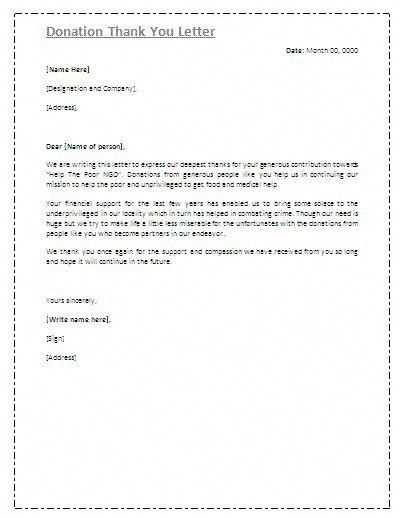
Encourage further involvement. This doesn’t have to be another donation, but can be an invitation to stay informed, participate in an event, or share the cause with others. By providing ways for donors to stay connected, you build a long-term relationship based on trust and mutual interest.